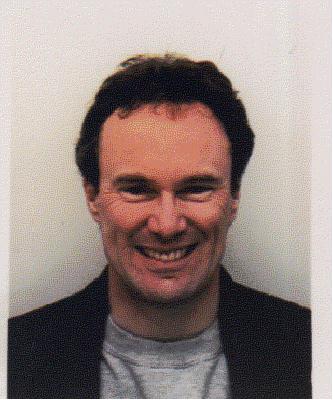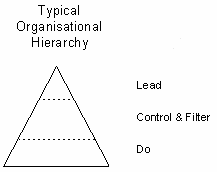|
|
|

|
What this site is for... This site originated from an accumulation of articles and thoughts on my desktop computer. I decided to organise these on a website so that they were easier for me to use and develop. Site Content... The content of this site focuses on understanding and applying creativity and innovation. As creativity needs stimulus, the content includes humour and a link to Arts & Letters Daily. These provide a look at the world from another perspective. This site also includes links to a few other useful or stimulating sites. To suggest a link, please click here to email me at creativeideas@creativeideas.20m.com A bit about me... Since leaving the electronics industry in the early 1990's and working in process improvement and quality (see my articles Achieving and Developing Quality and A Process Approach to Quality ), I've realised two key things: First, the limitations of using only logic and science to understand the world and Second, that we all have an ability to be creative. |
|
To be creative requires a number of skills: observation, emotional or intuitive response, communication and visualising and the ability to leave the comfort zone of the familiar and tested. This requires unlearning old lessons and accepting that real complexity can not be explained in black and white. Making this change can be difficult - my eyes were opened to the need for this while studying systems with the Open University in the early 1990's. The taught methodology for understanding and changing systems was Professor Peter Checkland's Soft Systems Methodology. Click here for a good introduction to this holistic approach. |
|
My thoughts on creativity...
In my opinion, based on observation and experience in the UK, conventional
academic intelligence tends to be in valued above creative intelligence and both
ignores the multiple intelligences described by
Howard Gardner
in his
One of the consequences of this is that the academically able then tend to be placed in charge of creative people who behave differently from them. Robert Alan Black's 32 Traits of Creative People describes some of these differences. Many creative people are square pegs hammered into round holes with insufficient challenge and opportunity for creative expression. This is limiting and frustrating - and a waste of human potential. This waste does not even make business sense - the increasing demands of competitive global markets and fast moving technology means that existing customers expectations continue to increase and need to be satisfied before the competition steps in. Brand loyalty has less and less relevance today. Managers need to release the creative energy of thier staff by removing those controls and measures that get in the way. In many companies, the attitude, 'why we can't' is more common than 'how we might'.
Their is a human need for creative expression (graffiti is just one everyday example) and I believe that much creative expression in work takes place unseen. Some of this is destructive in elaborate games against management while the majority of this is positive as described below: |

|
In the majority of the organisations, the functional structure is a shown on the left. Those at the 'Do' level interpret the directions from the 'Control & Filter' level. The occupants of the lowest level are generally free of the politics and power games of the middle level (often referred to as the 'concrete layer' from it's resistance to change and the barrier it creates between the top and bottom layers). This lower level is thus better able to informally share and develop good ideas and ways of working that make life easier. In my experience while working as a production test engineer in various companies, a smart engineer using 'initiates knowledge' of diagnosis and repair techniques could generally complete a task in half the time that management believed possible. The article Organizational learning and communities-of-practice: Toward a unified view of working, learning, and innovation is an excellent description of such informal cultures. |
Brian Hunt BSc MSc IEng MIIE. November 2000
email me at creativeideas@creativeideas.20m.com